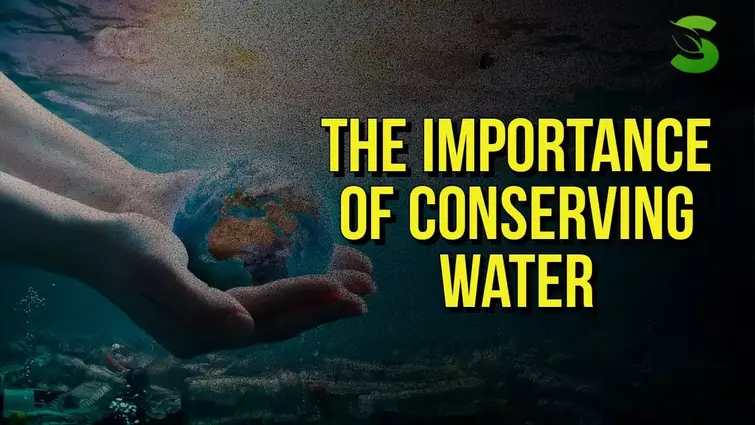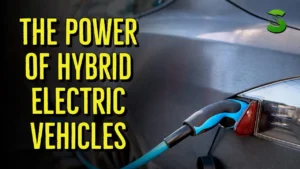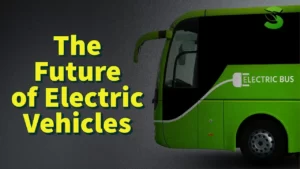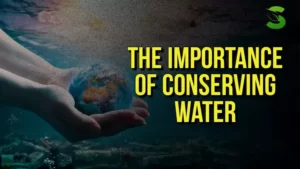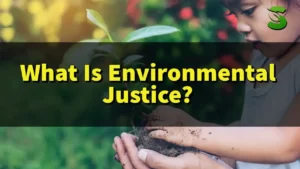Water is a precious resource that is vital for all forms of life on Earth. While our planet is primarily covered in water, only a fraction of it is fresh water that is readily available for human use. With a growing global population and increasing demands for water, it is imperative that we take steps to conserve and protect this invaluable resource.
Conserving water not only helps to address immediate water shortages but also contributes to a sustainable future for generations to come. By reducing our water consumption, we can alleviate pressure on existing water sources, protect natural ecosystems, and promote water sustainability.
This article aims to highlight the importance of conserving water and provide practical tips for individuals, households, and communities to adopt water-saving habits. By implementing these strategies, we can make a significant difference in conserving water and promoting a sustainable future.
The Global Water Crisis
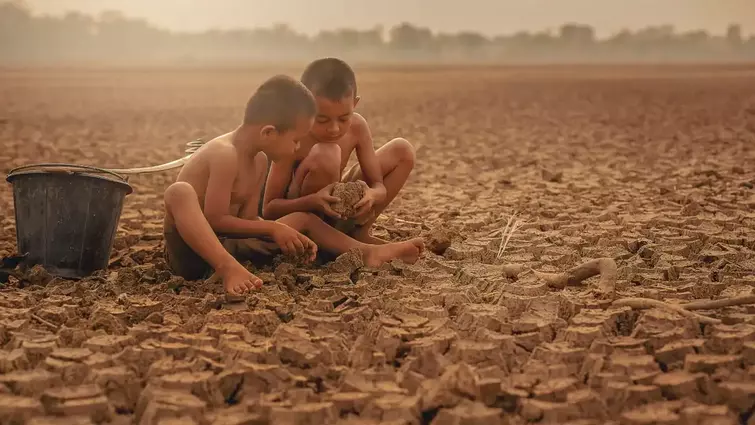
1.1 Understanding the Growing Water Scarcity Issue
Our planet boasts abundant water resources, yet access to clean and usable freshwater is becoming increasingly uneven, leading to a global water crisis. While some regions struggle with floods, others face chronic water scarcity, impacting nearly two billion people. This scarcity arises from a multitude of factors, including:
- Unequal distribution: Freshwater resources are not evenly distributed, with some areas naturally arid and others facing seasonal variability.
- Pollution: Contamination from industrial waste, agricultural runoff, and inadequate sanitation pollutes usable water sources.
- Inefficient water management: Overuse and unsustainable practices in agriculture, industry, and domestic sectors exacerbate the problem.
- Climate change: Rising temperatures, melting glaciers, and changing precipitation patterns further disrupt water availability.
1.2 Impact of Population Growth and Urbanization
A burgeoning global population puts increasing pressure on our water resources. As populations expand, so does the demand for water for basic needs like drinking, hygiene, and sanitation. Additionally, rapid urbanization intensifies the competition for water, as cities require water for infrastructure, industrial activities, and growing urban populations. This urban water demand often diverts resources from surrounding rural areas, exacerbating existing inequalities.
1.3 Consequences of Water Scarcity on the Environment
The water crisis isn’t just about human needs; it has severe ecological consequences. Declining water levels in rivers and lakes disrupt aquatic ecosystems, threatening biodiversity and the health of dependent flora and fauna. Water scarcity also drives deforestation as communities encroach on preserved areas for water sources, further destabilizing delicate ecosystems.
1.4 The Relationship between Water Scarcity and Climate Change
Climate change acts as a potent multiplier of water scarcity. Rising temperatures increase water evaporation, leading to drier climates and reduced recharge of groundwater resources. Melting glaciers and altered precipitation patterns further disrupt established water distribution systems, causing floods in some regions and droughts in others. This complex interplay further complicates the global water crisis and necessitates holistic solutions that address both climate change and unsustainable water management practices.
Benefits of Water Conservation
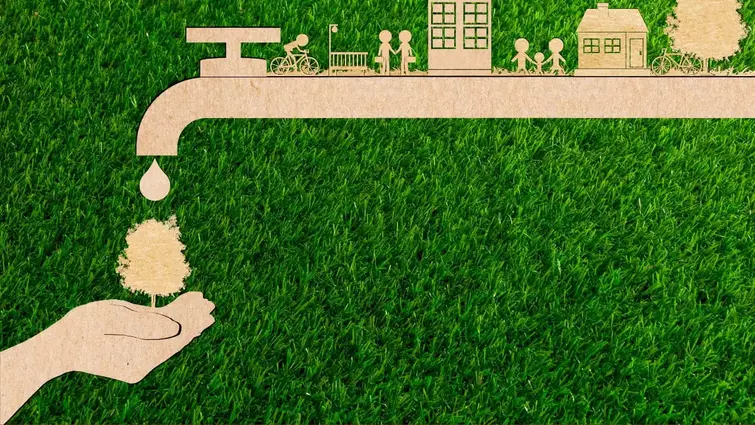
Conserving water isn’t just about saving drops; it’s about nourishing the roots of a sustainable future. The ripple effects of our water-conscious choices extend far beyond the faucet, positively impacting various facets of our lives and planet.
2.1 Preserving Natural Ecosystems and Biodiversity:
Water is the lifeblood of ecosystems. Conserving it protects delicate freshwater habitats, from vibrant coral reefs to cascading waterfalls. By reducing water diversion and pollution, we safeguard the rich tapestry of biodiversity that flourishes within these ecosystems, ensuring the survival of countless plant and animal species. Sustainable water practices foster healthier ecosystems, ultimately preserving the natural equilibrium essential for our own well-being.
2.2 Mitigating Water Pollution and Soil Erosion:
Overusing water often leads to increased pollution. Excess water can carry fertilizers, pesticides, and other contaminants from agricultural lands and urban landscapes into rivers and streams, harming aquatic life and jeopardizing drinking water quality. By conserving water, we reduce the volume of contaminated runoff, minimizing pollution and safeguarding the health of our water sources. Additionally, by minimizing water usage for outdoor tasks like lawn watering, we prevent soil erosion, which not only protects fertile land but also prevents sedimentation from damaging waterways.
2.3 Reducing Energy Consumption and Carbon Footprint:
Every drop of water that reaches our faucet requires energy to pump, treat, and distribute. Conserving water translates to reduced energy consumption, lowering our dependence on fossil fuels and consequently mitigating greenhouse gas emissions. This contributes significantly to combating climate change, creating a ripple effect that extends beyond water conservation and towards a more sustainable future.
2.4 Economic Advantages of Water Conservation:
The benefits of water conservation extend to our wallets as well. By using less water, we automatically reduce our water bills, saving valuable resources at the individual and community levels. Furthermore, businesses and industries that implement water-saving practices benefit from reduced operational costs and increased efficiency. Investing in water-saving technologies often pays for itself in the long run, creating a win-win situation for both the environment and our pocketbooks.
In conclusion, the benefits of water conservation are far-reaching and multifaceted. From safeguarding ecosystems and combating climate change to saving money and creating a more sustainable future, every drop conserved paves the way for a healthier planet and a brighter tomorrow. As we embrace a water-conscious mindset and implement these practical practices, we can collectively navigate the turbulent waters of water scarcity and ensure a secure and flourishing future for all.
Practical Tips for Conserving Water at Home
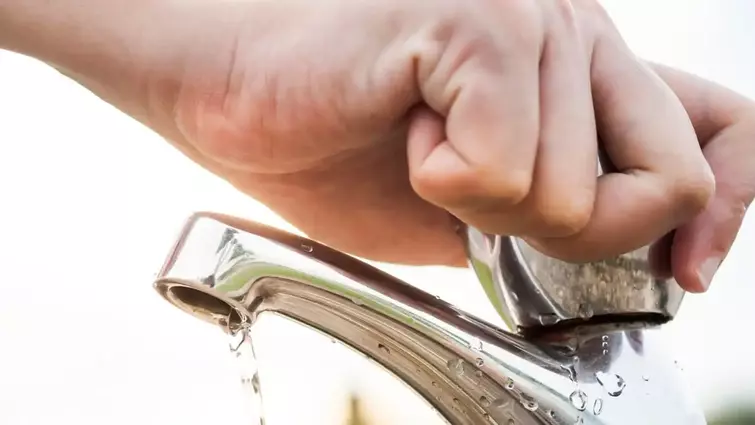
3.1 Efficient Indoor Water Use:
Turning your home into a haven of water conservation involves making small changes with big impacts. Here are some practical tips to get you started:
3.1.1 Fixing Leaks and Dripping Faucets:
A tiny leak can be a big problem! A single dripping faucet wastes gallons of water per day. Regularly inspect your faucets, pipes, and toilets for leaks, and fix them promptly. Even a small repair can make a significant difference.
3.1.2 Installing Water-Efficient Toilets and Showerheads:
Modern fixtures are a game-changer. Consider replacing your old toilets and showerheads with low-flow models. You can potentially cut your water consumption by up to 50% without sacrificing performance.
3.1.3 Using Appliances and Dishwashers Wisely:
Run appliances only when fully loaded. This optimizes water usage and saves energy. For smaller loads, choose eco-cycles or adjust settings to optimize water use.
3.1.4 Practicing Shorter Showers and Turning off Taps:
Five-minute showers are your friend! Every second counts. Turn off the tap while brushing your teeth, shaving, or washing dishes. Small habits make a big impact.
3.1.5 Collecting and Reusing Greywater:
Give “used” water a second life! Greywater from sinks, showers, and washing machines can be collected and reused for watering plants, washing cars, or cleaning floors. Check your local regulations for any restrictions.
Bonus Tip: Aerators are magical! These nifty devices create a satisfying bubbly flow while using less water. Upgrade your faucets and enjoy the savings.
Beyond the essentials:
- Defrost frozen food in the fridge, not under running water.
- Steam or minimally boil vegetables when cooking.
- Wash fruits and vegetables in a basin, not under running water.
- Choose water-efficient landscaping and use mulch to retain moisture in the soil.
3.2 Outdoor Water Conservation:
Step outside and embrace the green while conserving the blue! Here are some practical tips to make your outdoor space a model of water-wise living:
3.2.1 Smart Lawn and Garden Irrigation Techniques:
- Water wisely: Ditch the midday sprinkler blast! Early morning watering minimizes evaporation, allowing water to reach plant roots effectively. Consider deep, infrequent watering for healthier plant growth.
- Target your watering: Trade sprinklers for drip irrigation or soaker hoses that deliver water directly to plant roots, minimizing waste.
- Know your soil: Different soils have different needs. Sandy soils drain quickly and need more frequent watering, while clay soils hold moisture well and require less. Understanding your soil type helps you water efficiently.
- Embrace technology: Invest in a smart irrigation system that uses sensors to automatically adjust watering based on real-time weather and soil conditions.
3.2.2 Choosing Native and Drought-Resistant Plants:
- Go local: Native plants are perfectly adapted to your climate and require minimal water. They attract pollinators and create a vibrant, low-maintenance landscape.
- Drought-tolerant champions: Opt for plants like succulents, cacti, ornamental grasses, and lavender that thrive in dry conditions, adding beauty and texture to your outdoor space.
- Group strategically: Plant water-loving species together in designated areas to minimize watering needs and create diverse microclimates.
3.2.3 Utilizing Mulch and Compost for Water Retention:
- Mulch magic: Spread a layer of organic mulch around your plants. This acts as a blanket, retaining moisture in the soil and reducing evaporation. Replenish mulch regularly to maintain its effectiveness.
- Compost power: Add compost to your soil to improve its structure and water-holding capacity. Healthy soil absorbs water more efficiently, reducing the need for frequent watering.
3.2.4 Harvesting Rainwater for Outdoor Use:
- Catch the raindrops: Install a rain barrel to collect rainwater from your roof. This free source of water can be used for watering plants, washing your car, or even topping up your pool.
- Think beyond the barrel: Consider larger rainwater harvesting systems with underground storage tanks for greater capacity and diverse uses.
3.2.5 Practical Tips for Pool and Spa Owners:
- Cover it up: Invest in a pool cover to minimize evaporation, especially during hot weather. This can save you thousands of gallons of water per year.
- Leak detective: Regularly check for and fix leaks in your pool equipment to prevent water loss.
- Smarter filtration: Upgrade to a variable-speed pool pump that automatically adjusts its power based on demand, saving energy and water.
- Shower before you swim: Rinse off before entering the pool to reduce the need for chemicals and minimize the amount of water you bring in.
Remember, every drop you save outdoors adds up to a more sustainable future. By incorporating these tips and tailoring them to your specific needs, you can create a beautiful and water-wise outdoor haven that thrives in harmony with the environment.
Water Conservation in Agriculture and Industry: Turning the Tide on Scarcity
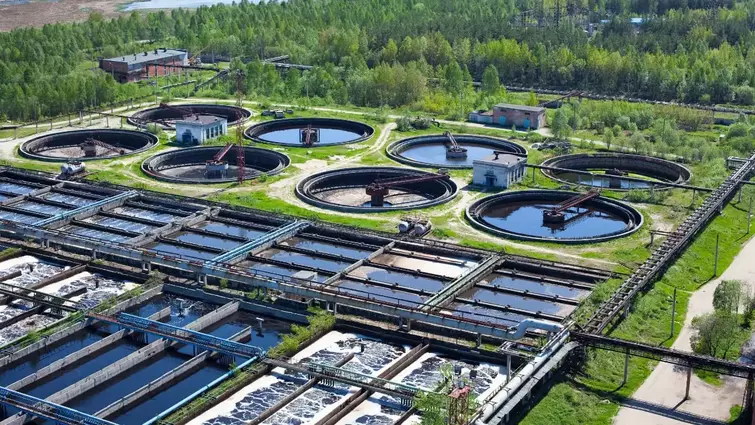
While individual efforts at home are crucial, significant water savings can also be achieved in the sectors that consume the most – agriculture and industry. Embracing innovative practices and technologies in these key areas can have a ripple effect, ensuring a more sustainable future for all.
4.1 Implementing Efficient Irrigation Methods:
Traditional flood irrigation methods often lead to water waste and uneven distribution. Switching to efficient irrigation techniques like:
- Drip irrigation: delivers water directly to plant roots, minimizing evaporation and reducing overall water use by up to 70%.
- Precision irrigation: utilizes sensors and satellite data to tailor water application to specific crop needs based on real-time conditions, optimizing water use and maximizing yields.
- Subsurface irrigation: employs buried pipes or emitters to deliver water directly to the root zone, further reducing evaporation and minimizing surface runoff.
These methods not only conserve water but also improve crop health and yield, making them a win-win for farmers and the environment.
4.2 Adopting Drip Irrigation Systems:
Not all crops are created equal when it comes to water needs. Drip irrigation systems excel in situations where water scarcity is a concern or where high-value crops are grown. This targeted approach allows farmers to:
- Minimize water waste: By delivering water directly to plant roots, drip irrigation significantly reduces evaporation and runoff, maximizing water efficiency.
- Improve crop yields: Precise water application ensures optimal moisture levels for plants, leading to improved growth and higher yields.
- Reduce fertilizer and pesticide use: Drip irrigation systems can be combined with fertigation, injecting fertilizers and pesticides directly into the root zone, minimizing environmental impact and improving efficiency.
While the initial investment in drip irrigation systems may be higher, the long-term benefits in terms of water savings, increased yields, and reduced operating costs make them a worthwhile choice for many agricultural operations.
4.3 Promoting Soil Moisture Monitoring:
Knowing when and how much to water is essential for water conservation in agriculture. Soil moisture monitoring, through:
- Sensors: provide real-time data on soil moisture levels, allowing farmers to irrigate only when necessary and avoid overwatering.
- Satellite imagery: can be used to monitor large areas of farmland and identify water stress early on, enabling targeted irrigation and improved water management.
- Weather forecasting: integrates weather data with soil moisture information to predict future irrigation needs, helping farmers plan ahead and adjust watering schedules accordingly.
By combining these tools, farmers can make informed decisions about irrigation, ensure optimal soil moisture conditions for their crops, and significantly reduce water waste.
4.4 Encouraging Water-Efficient Industrial Processes:
Industrial processes often require large amounts of water. However, implementing water-saving measures can significantly reduce consumption without compromising output. Some practical solutions include:
- Closed-loop systems: recycle and reuse water within the production process, minimizing the need for freshwater intake and reducing wastewater discharge.
- Water-efficient technologies: upgrading equipment and processes with water-saving features, such as low-flow valves, spray nozzles, and water-recycling systems, can lead to significant water savings.
- Leak detection and repair: regularly inspecting and fixing leaks in pipes and equipment prevents water loss and ensures efficient water use.
By embracing these approaches, industries can not only reduce their environmental footprint but also achieve cost savings through lower water consumption and wastewater treatment costs.
4.5 Innovative Technologies for Water Recycling and Reuse:
Advances in technology are opening up new possibilities for water recycling and reuse in agriculture and industry. Some promising solutions include:
- Desalination: converting seawater or brackish water into freshwater for various uses, particularly in coastal areas facing water scarcity.
- Wastewater treatment: treating wastewater to a high standard allows it to be reused for irrigation, industrial processes, or even non-potable purposes like toilet flushing.
- Greywater recycling: collecting and reutilizing slightly used water from sinks, showers, and washing machines for irrigation, cleaning, or other non-potable applications.
These technologies offer exciting possibilities for reducing our reliance on freshwater resources and creating a more circular water economy.
By implementing these various strategies across agriculture and industry, we can significantly reduce water consumption, mitigate the impacts of water scarcity, and ensure a more secure water future for generations to come. Remember, every drop saved in these sectors has a cascading effect, contributing to a more sustainable and water-abundant world.
Water Conservation Policies and Initiatives: Fostering Collective Action
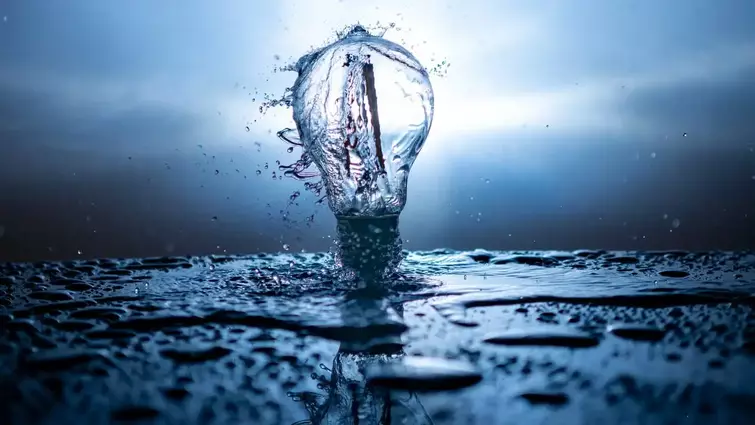
Tackling water scarcity demands a collective effort. Beyond individual actions, robust policies, initiatives, and education play a crucial role in driving large-scale water conservation and ensuring a sustainable future. Let’s dive into the diverse actors and efforts contributing to this critical cause:
5.1 International Water Conservation Efforts:
International organizations like the UN and World Bank lead global initiatives that promote water conservation and sustainable water management across countries. Key examples include:
- Sustainable Development Goal 6: Aiming to ensure access to clean water and sanitation for all by 2030, this goal guides national and international efforts in water conservation and equitable access.
- UN-Water: This inter-agency platform coordinates global efforts on water issues, facilitating knowledge sharing, policy development, and resource mobilization for sustainable water management.
- World Water Forum: Held every three years, this forum brings together stakeholders from governments, NGOs, and the private sector to discuss and promote solutions to global water challenges.
These collaborative efforts provide a framework and resources for countries to implement effective water conservation strategies and address water scarcity challenges.
5.2 Government Policies and Regulations:
National governments play a crucial role in shaping water conservation through:
- Water pricing: Adjusting water tariffs to reflect its true value and incentivize efficient water use can encourage conservation behavior.
- Subsidies and incentives: Providing financial support for adopting water-saving technologies or implementing sustainable water management practices can accelerate their adoption.
- Regulatory frameworks: Setting water quality standards, enforcing water efficiency regulations for industries and buildings, and promoting responsible water management practices can ensure sustainable water use.
Effective government policies can drive long-term systemic change and support individual and community-level water conservation efforts.
5.3 Corporate Social Responsibility in Water Conservation:
Businesses are increasingly recognizing the importance of water stewardship and integrating it into their corporate social responsibility initiatives. Key ways corporations can contribute:
- Adopting water-efficient practices: Implementing water-saving technologies and processes within their operations can significantly reduce water consumption.
- Investing in renewable water sources: Exploring rainwater harvesting, greywater reuse, or even desalination technologies can lessen dependence on traditional water sources.
- Community engagement: Partnering with communities and NGOs to educate, raise awareness, and implement water conservation initiatives can create a broader impact.
These responsible practices not only benefit the environment but also enhance a company’s reputation and contribute to long-term sustainability.
5.4 Community-Based Water Conservation Programs:
Communities and NGOs play a vital role in raising awareness, mobilizing action, and implementing grassroots solutions for water conservation. Examples include:
- Rainwater harvesting workshops: Educating communities about collecting and utilizing rainwater for various purposes can empower them to become water-independent.
- Tree planting initiatives: Promoting tree planting can improve soil health, enhance groundwater recharge, and reduce water runoff, contributing to sustainable water management in local areas.
- Community gardens: Establishing shared spaces for growing food using water-efficient practices can promote sustainability, education, and food security within communities.
These local initiatives build a sense of ownership and collective responsibility for water conservation, leading to long-term behavioral change and positive environmental impacts.
5.5 Role of Education and Awareness:
Educating individuals about the importance of water conservation and empowering them to adopt sustainable practices is key to long-term success. This can be achieved through:
- School curricula: Integrating water conservation education into school programs can instill responsible water use habits in future generations.
- Public awareness campaigns: Utilizing media, community events, and outreach programs can raise awareness about water scarcity and promote conservation practices among the broader public.
- Knowledge sharing platforms: Online resources, workshops, and community forums can provide readily accessible information and facilitate knowledge exchange on water conservation best practices.
By fostering a culture of water awareness and equipping individuals with the necessary knowledge and tools, we can empower them to become active participants in building a more sustainable water future.
Remember, addressing water scarcity requires a multi-pronged approach. By combining individual actions, effective policies, community initiatives, and ongoing education, we can create a wave of change that ripples across sectors and societies, ensuring a secure water future for
FAQ For The Importance of Conserving Water
Q: Why is water conservation so important?
A: Water is a precious and finite resource, essential for life, health, ecosystems, and economies. However, it’s facing increasing scarcity due to factors like:
- Population growth
- Climate change
- Pollution
- Overuse
Conserving water is crucial to ensure sustainable water supplies for future generations, protect the environment, and promote economic resilience.
Q: What are some simple ways to conserve water at home?
A: You can make a significant difference by adopting these everyday habits:
- Fix leaky faucets and pipes promptly.
- Install water-efficient fixtures like low-flow showerheads and toilets.
- Run appliances only when fully loaded and choose eco-settings.
- Take shorter showers (5 minutes or less).
- Turn off the tap while brushing teeth, shaving, or washing dishes.
- Defrost food in the fridge, not under running water.
- Steam or minimally boil vegetables.
- Wash fruits and vegetables in a basin, not under running water.
- Collect and reuse greywater for gardening or car washing.
Q: How can I conserve water outdoors?
A: Here are some effective tips:
- Water lawns and gardens early in the morning to minimize evaporation.
- Use drip irrigation or soaker hoses to deliver water directly to plant roots.
- Choose native and drought-resistant plants that thrive with less water.
- Apply mulch around plants to retain moisture and reduce evaporation.
- Harvest rainwater for outdoor use by installing a rain barrel.
- Cover pools and spas to minimize evaporation.
Q: What are some innovative water conservation practices in agriculture and industry?
A: These sectors are embracing technologies and practices to reduce water use:
- Drip irrigation systems deliver water directly to plant roots, minimizing waste.
- Soil moisture monitoring sensors and satellite imagery guide targeted irrigation.
- Closed-loop systems recycle water within industrial processes.
- Water-efficient equipment and processes minimize industrial water consumption.
- Leak detection and repair programs prevent water loss in both sectors.
- Desalination, wastewater treatment, and greywater recycling expand water sources.
Q: What roles do policies and initiatives play in water conservation?
A: Collective action is crucial for large-scale water conservation:
- International organizations like the UN and World Bank promote global water goals.
- Governments implement water pricing, subsidies, and regulations to encourage conservation.
- Businesses adopt water-efficient practices and invest in renewable water sources.
- Communities engage in rainwater harvesting, tree planting, and community gardens.
- Education and awareness campaigns instill responsible water use habits.
Q: What can I do to help conserve water in my community?
A: You can make a difference by:
- Adopting water-saving practices at home and outdoors.
- Supporting local water conservation initiatives and organizations.
- Educating others about the importance of water conservation.
- Advocating for water-friendly policies and regulations.
- Choosing products from businesses committed to water stewardship.
Conclusion: Every Drop Counts in the Collective Tide
Our journey through the importance of water conservation has reached its culmination, but the quest for a sustainable future continues. The challenges of water scarcity may seem daunting, but remember, every drop conserved holds the power to turn the tide towards a brighter tomorrow.
We stand at a pivotal moment, where individual actions have the potential to coalesce into a powerful collective force. By incorporating the practical tips we’ve explored, from fixing leaky faucets to embracing water-wise gardening, we can each contribute to a ripple effect of change.
But change demands more than individual droplets. Robust policies, community initiatives, and unwavering education are the currents that propel us towards a secure water future. Governments must implement effective regulations and incentivize sustainable practices, while businesses must integrate responsible water stewardship into their operations. Communities hold the power to mobilize action, nurture awareness, and implement grassroots solutions that empower local change.
Finally, remember the transformative power of knowledge. Education is the lifeblood of awareness, empowering individuals to become informed advocates for water conservation. By fostering a culture of water wisdom through school curricula, public campaigns, and accessible resources, we can equip generations to come with the tools and knowledge to become responsible water stewards.
The task before us is not insurmountable. Every action, every policy, every drop conserved paves the way for a future where water is not a privilege but a shared treasure. Let us embrace our collective responsibility, join hands across sectors and communities, and ensure that every drop counts in the tide towards a sustainable water future for all.
General water conservation reference links:
- United Nations Environment Programme: https://www.un.org/youthenvoy/2013/08/unep-united-nations-environment-programme/
- The Water Project: https://thewaterproject.org/
- Water Footprint Calculator: https://www.watercalculator.org/
- Indoor water conservation: https://www.epa.gov/watersense
- Outdoor water conservation: https://www.epa.gov/watersense/start-saving
- Water conservation in agriculture: https://www.iwmi.cgiar.org/
- Water conservation in industry: https://www.wbcsd.org/
- Water conservation policies and initiatives: https://www.unwater.org/
ALSO READ | What Is Environmental Justice?
